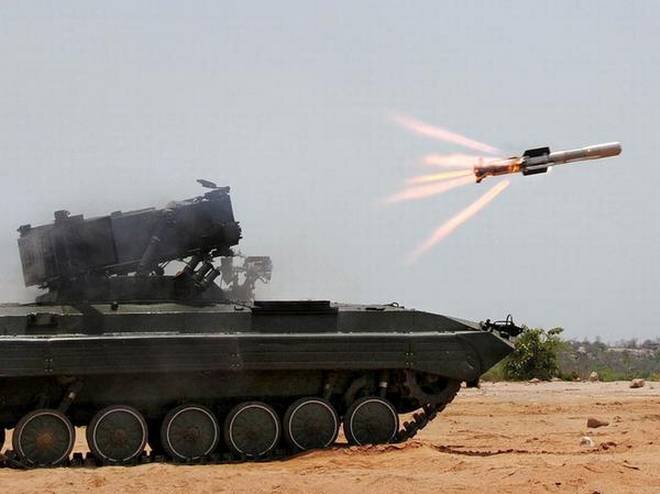NAG Missile: Anti Tank Guided Missile
Why in News
Recently, the final user trial of 3rd generation Anti Tank Guided Missile (ATGM) NAG was carried out successfully from Pokhran range in Thar desert (Rajasthan).
Key Points
- Developed By: Defence Research and Development Organisation (DRDO)
- Features:

- The NAG missile has been developed to strike and neutralise highly-fortified enemy tanks. It also has night strike capabilities.
- ATGMs are missile systems that can strike and neutralise armoured vehicles such as tanks.
- It has a minimum range of 500 metres and maximum range of 4 km.
- As a third-generation ‘fire and forget’ category system, NAG uses an imaging infra-red seeker to lock on to the target before launch.
- In the top attack mode, the missile is required to climb sharply after launch and travel at a certain altitude, then plunge on top of the target. In the direct attack mode, the missile travels at a lower altitude, directly striking the target.
- It has a capability to defeat Main Battle Tanks (MBT) equipped with composite and reactive armour.
- The NAG missile carrier (NAMICA) is a Russian-origin BMP-II based system with amphibious capability.
- BMP-II is a mechanized infantry fighting vehicle.
- The NAG missile has been developed to strike and neutralise highly-fortified enemy tanks. It also has night strike capabilities.
- Version of NAG ATGM: DRDO is currently in the final stages of the development of the helicopter-launched version of Nag ATGM, called the Helina, which has undergone successful tests in 2018.
- Significance:
- With this final user trial, Nag will enter the production phase.
- The missile will be produced by Defence Public Sector Undertaking (PSU) Bharat Dynamics Limited (BDL), whereas Ordnance Factory, Medak, will produce the NAMICA.
- This means that the Indian Army will no longer have to import this weapon from either Israel or the USA for the range of four kilometres.
- It was due to unavailability of a credible anti-tank weapon, that India had to buy around 200 pieces of Spike anti-tank missiles from Israel as emergency purchases after the aggression by the People's Liberation Army (China) in Ladakh.
- Further, the army is currently using second generation Milan 2T and Konkur ATGMs and has been looking for about third-generation missiles, which are important for stopping advancing enemy tanks.
- With this final user trial, Nag will enter the production phase.
- Other Missile Systems: Missiles have been developed by India under ‘Integrated Guided Missile Development Program’.
IGMDP (Integrated Guided Missile Development Program)
- It was conceived by Dr. A.P.J. Abdul Kalam to enable India attain self-sufficiency in the field of missile technology. It was approved by the Government of India in 1983 and completed in March 2012.
- The 5 missiles (P-A-T-N-A) developed under this program are:
- Prithvi: Short range surface to surface ballistic missile.
- Agni: Ballistic missiles with different ranges, i.e. Agni (1,2,3,4,5)
- Trishul: Short range low level surface to air missile.
- Nag: 3rd generation anti-tank missile.
- Akash: Medium range surface to air missile.
- Other Recent Tests:
- The NAG ATGM trial was in continuation of a series of missile tests conducted by the DRDO in the last one-and-a-half months.
- Among these trials were two other ATGMs - the Laser-Guided ATGM, and the Stand-Off Anti-Tank Missile (SANT).
- DRDO, successfully tested India’s first indigenous anti-radiation missile named Rudram, Supersonic Missile Assisted Release of Torpedo (SMART) system, nuclear capable missile Shaurya, Naval version of the BrahMos and Hypersonic Technology Demonstrator Vehicle (HSTDV).
- The NAG ATGM trial was in continuation of a series of missile tests conducted by the DRDO in the last one-and-a-half months.